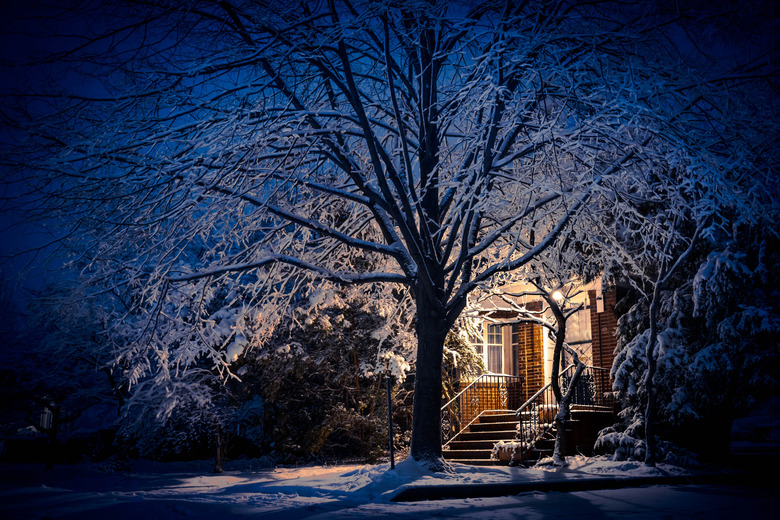Barometric Pressure & Snowstorms
Barometric pressure refers to the amount of pressure exerted on the Earth by the atmosphere at any point in time. A large decline in barometric or air pressure signals the approach of a low-pressure system, which in northern climates can form a blizzard when combined with temperatures of zero degrees Celsius (32 degrees Fahrenheit) or lower. Changes in barometric pressure are among the weather conditions meteorologists use to predict oncoming snowstorms.
Air Pressure
Air Pressure
Air pressure is measured in millibars by a barometer, which indicates the "weight" or pressure of a column of air pressing down on one spot on the Earth's surface. High and low air-pressure systems are known as ridges and troughs, and their movement about the Earth is influenced by atmospheric circulation and winds. These pressure systems are the primary forces behind weather fronts that form distinct boundaries between air masses of varying density, temperatures and humidity.
Cold Fronts
Cold Fronts
Weather events such as storms typically occur when a dense, cold air mass runs into and overtakes a humid, warm air mass, resulting in precipitation when the warm, moisture-laden air is pushed up into the colder atmosphere. This kind of front produces snow in northern climates during winter months when snowstorms develop along the fault line of clashing air masses. A blizzard's bitter winds also develop from the differences in barometric pressure between cold and warm air masses, as air in high-pressure systems will rush into areas of low pressure.
Low-Pressure Systems
Low-Pressure Systems
Meteorologists can predict the onset of snowstorms and blizzards by reading a barometer and watching for a dip in the barometric pressure. Falling air pressure indicates a low-pressure system, which is associated with clouds and precipitation. A historic snowstorm that hit the eastern United States in January 1978, for example, gave some indication of its impending arrival when the barometric pressure in some cities dropped a staggering 40 millibars in 24 hours.
High-Pressure Storms
High-Pressure Storms
Although high-pressure systems are generally associated with clear, good weather, these systems can also bring blizzards of their own. Sometimes cold air fronts from the Arctic travel south through Canada in dense, high-pressure systems. These fronts can carry humidity for hundreds of miles and, in winter months, can give rise to a snowstorm.
Cite This Article
MLA
Echolls, Taylor. "Barometric Pressure & Snowstorms" sciencing.com, https://www.sciencing.com/barometric-pressure-snowstorms-23207/. 13 March 2018.
APA
Echolls, Taylor. (2018, March 13). Barometric Pressure & Snowstorms. sciencing.com. Retrieved from https://www.sciencing.com/barometric-pressure-snowstorms-23207/
Chicago
Echolls, Taylor. Barometric Pressure & Snowstorms last modified March 24, 2022. https://www.sciencing.com/barometric-pressure-snowstorms-23207/
